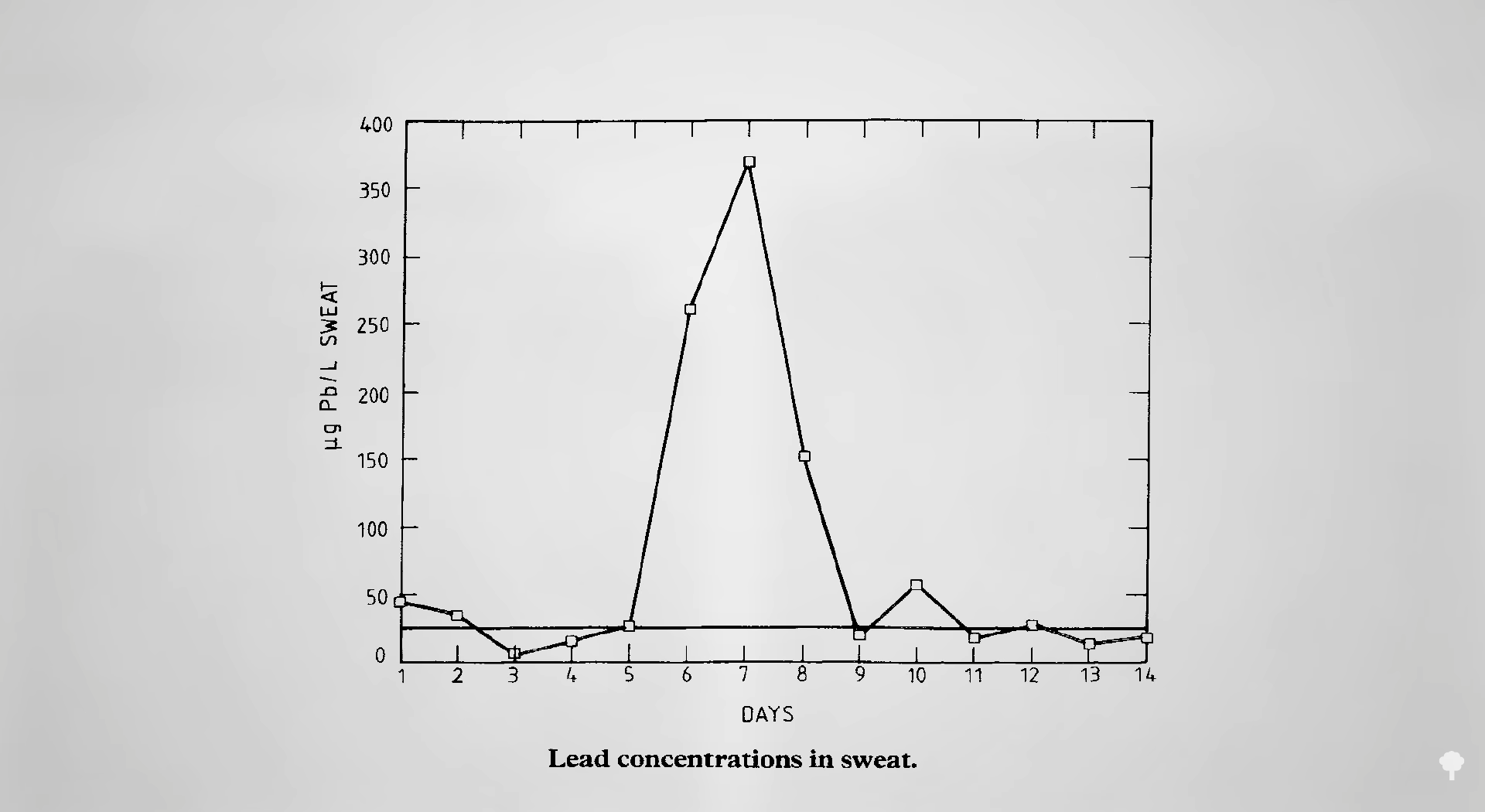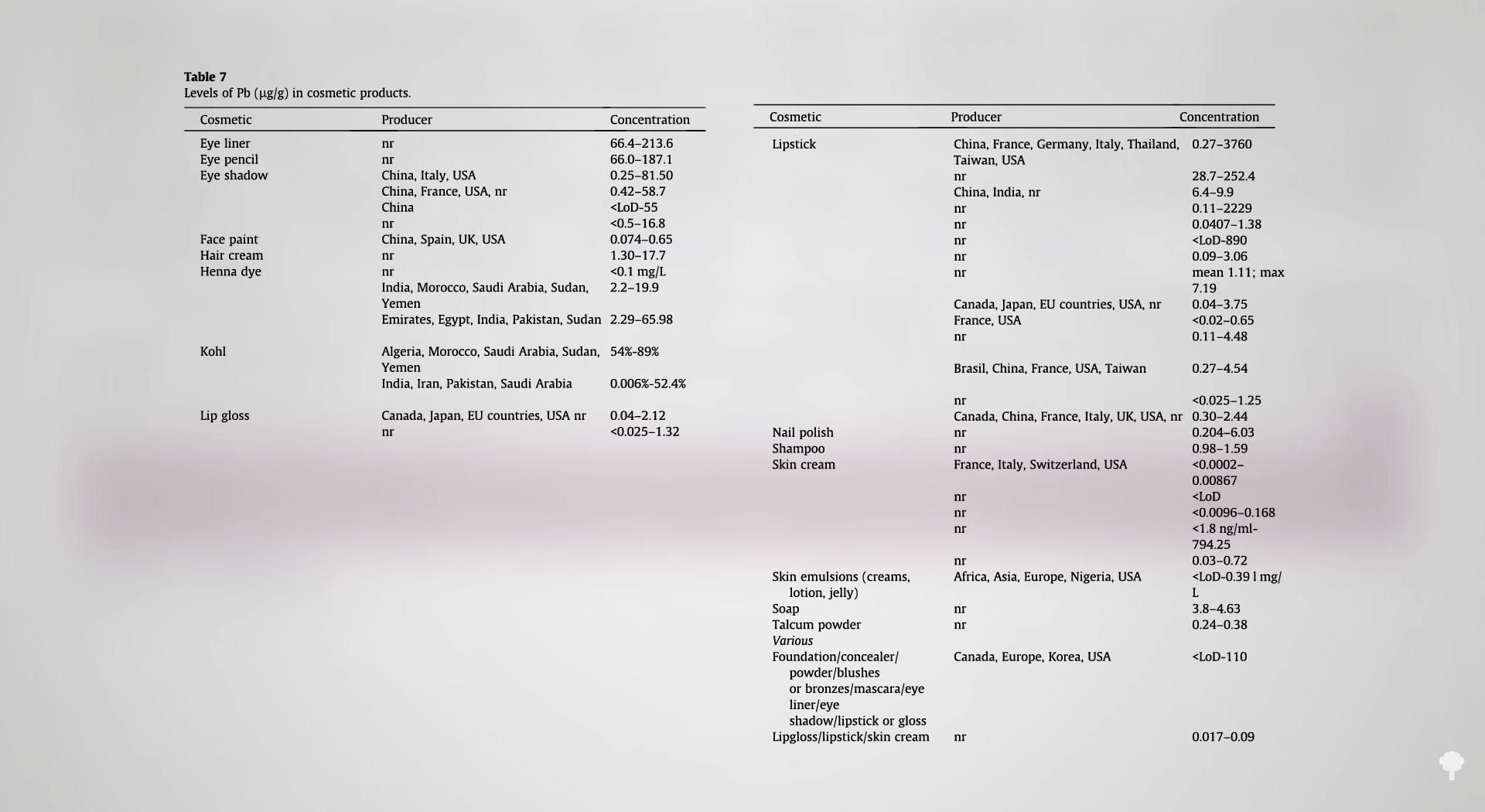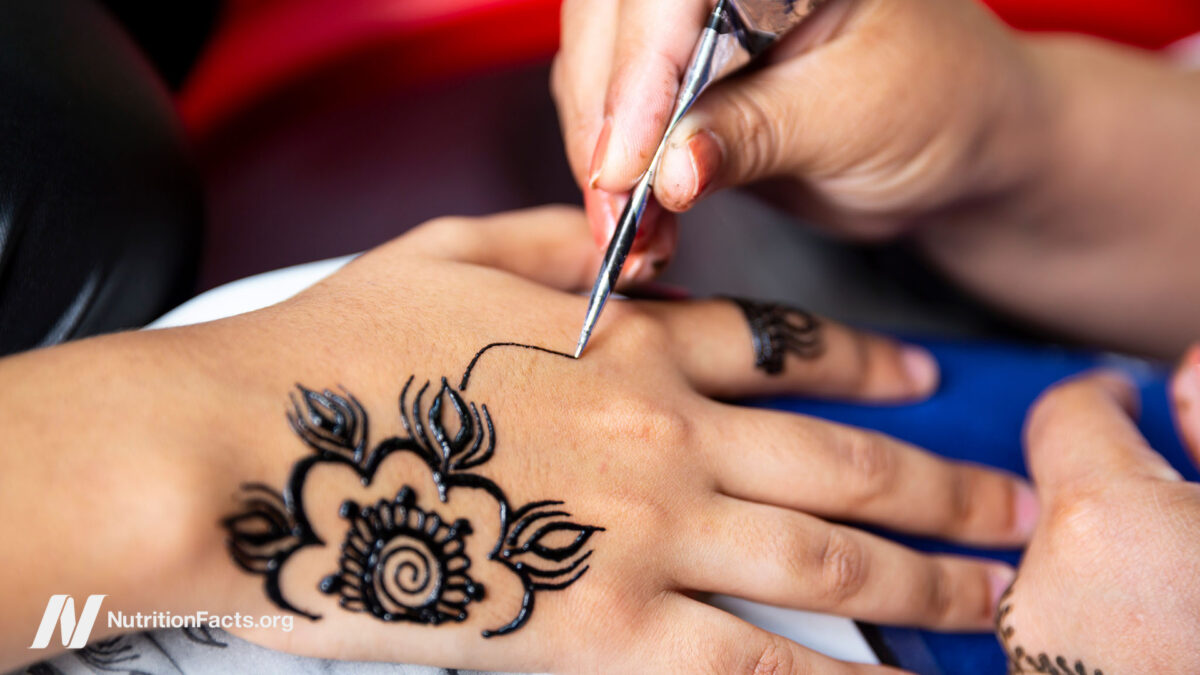Is there possibility of guide and PPD contamination of red and black henna?
The “average adult employs 9 personalized treatment products each working day, with 126 unique chemical elements.” We made use of to feel that anything utilized to the pores and skin would “always keep on being on the surface area of the body,” and the only thing you experienced to be concerned about were issues like local skin irritation. But, more than new many years, “it was regarded that some topically applied substances can penetrate into or via human skin” and stop up circulating all over our bodies.
Take the toxic significant steel direct (Pb), for example. As you can see in the graph beneath and at :38 in my movie Is Henna Secure?, to see if lead could be absorbed as a result of the skin into the system, researchers used lead to a subject’s still left arm and then calculated the amount of direct in the sweat coming off their ideal arm above the subsequent couple of days. They observed a large spike, proving virtually 30 a long time ago that “lead can be absorbed as a result of skin and quickly distributed in the course of the overall body.”

This led community overall health authorities “to suggest that moms and dads avoid applying cosmetics on their little ones that could be contaminated with Pb.” Which cosmetics could possibly those people be? Simply because it’s a purely natural constituent of numerous shade pigments, guide has been located in a vast vary of beauty products—from eye liner and lip gloss to hair cream and nail polish, as you can see underneath and at 1:07 in my online video. The Fda has set an upper limit for direct at 20 parts for each million. Nevertheless only some samples of henna exceeded this higher restrict, mainly because henna is “used for hair treatment method, as a substitute for chemical hair dyes and also for momentary tattoos, these quantities of Pb that stay on the skin or hair for a extended time cannot be harmless.” Certainly, scientific tests recommend that lead “may have no identifiable safe publicity stage, with even the cheapest degrees demonstrated to affect the fetus and the central anxious system in little ones.” “Thus, the use of henna particularly between small children may well represent a general public wellbeing chance.” So, “increasing awareness of henna’s really serious poisonous implications looks to be the only trusted implies of ending or at the very least decreasing the use of such dangerous product especially when small children are involved.”

Typically, henna was just the dried powdered leaves of a plant. Much more not too long ago, while, other substances have been included to give it a stronger colour, this kind of as direct, stated to be “one of the most frequent and egregious additives in henna.” But, direct is not as frequent as paraphenylenediamine (PPD), a coal tar by-product.
“The crimson paste customarily utilized, regarded as ‘red henna,’ seldom provides adverse results,” but to accomplish a darker pigment, recognized as “black henna,” a variety of additives could be used, like “animal urine.” Greater pee than PPD, nevertheless, “a coal-tar hair dye” that can induce unpleasant pores and skin reactions, such as blistering and scarring. Why include PPD at all? “In addition to achieving a darker and longer-long lasting color, PPD will help shorten the period of the tattooing process” from as long as 12 hours down to significantly less than 2 several hours. So, though the use of black henna may be “tempting,” it has the possible for both brief- and lengthy-expression facet results.
How prevalent are these reactions? The ideal estimate is about 2.5 percent, which means 1 in 40 young children who get a black henna tattoo may well have an allergic reaction. However, this observe “has become trendy, at any time because the Spice Women decorated on their own with these entire body designs.” (Many thanks a ton, Spice Girls!) There’s no these types of point as all-natural black henna, so “perhaps it is ideal to regard the regular observe of red henna, lest a short term tattoo flip into a long lasting scar.”
The problem is that “PPD can be located in products and solutions labeled as ‘red henna,’ way too,” so just due to the fact it is purple doesn’t imply it is not dangerous. This is undesirable information for the $100 million field.
Simply because henna of all colours is so often adulterated, underneath Fda recommendations, “henna must not be utilized to the skin at all.”






More Stories
‘Unretiring’? This is how to handle your Medicare coverage
6 Hacks to Build More Sustainable Habits
Red cheeks – what can you do?